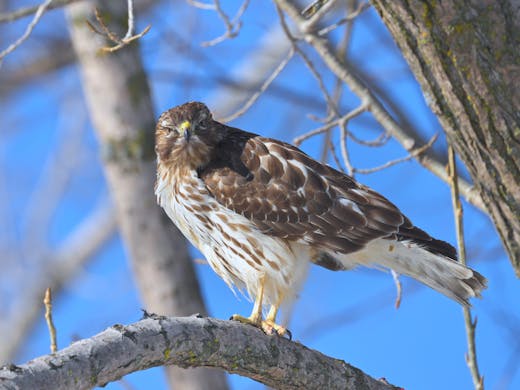Lenses and Lens Accessories
The correct choice of the lens used in wildlife photography is as important as the camera, if not more so. You should look for a lens with a low aperture and a long focal length.
NIKKOR Z 100-400mm f/4.5-5.6 S
My latest addition. I experienced issues with reach using the NIKKOR 70-200mm in most park settings around Montreal, so I were in search of a lens with a longer reach. Video recordings with the NIKKOR 100-400mm and TC2.0 will result in a final focal length of 400mm x 2 x 1.5 = 1200mm, with a minimum aperture of f/13. This is more than sufficient for daytime recording with the camera/lens mounted on a tripod.
NIKKOR Z MC 105mm f/2.8G
My macro lens for flower photography and for macro video recordings. In particular I like the large focus ring allowing easy switch to manual focusing when necessary which is most of the time.
First Impression
It turns out, though, that the minimal focus distances are about the same. I looked up the datasheets of both lenses to compare. However, the new lens is full-frame capable and has a slightly longer focal length. In theory, I should be able to capture closer shots of the subjects I am interested in with higher resolution than I am used to. Let’s see if that will be true.
At some point, I will have a collection of photos of the same subjects taken previously with my Nikon D500/Tamron 90mm combo compared with the new Nikon Z6/NIKKOR Z 105mm. For now, I am happy to own a macro lens again after one year of selling the old one because the lens wasn’t compatible with my new camera.
Is Macro Photography more Popular?
Curiously, my photos taken with a macro lens usually outperform other photos in terms of views. On Unsplash, four of the top five photos are macro shots. It may be that, in general, macro photography is more popular, or that the subjects photographed are more appealing. Anyway, I don’t really have a preference for macro photography in particular.
NIKKOR Z 24-70mm f/2.8
I used the NIKKOR 28-70mm lens for flower photography while awaiting the arrival of Nikon's Z Macro lens. However, due to its long minimum focus distance, it was not very useful for macro photography. I now use it for landscape photography.
Why and How?
From time to time, I become aware of new gear, and rarely do I become so enamoured with a particular item that I feel compelled to own it as soon as possible. However, I also feel uncomfortable hoarding gear, as it aligns with my tendency to discard items I don't use frequently.
I heard about the NIKKOR S 24-70mm f/2.8, which would resolve my issues with wide-angle photography. However, I won't allow the purchase of such a costly new lens if, in return, I am not able to sell some of my old gear. Given that the new lens is a bit pricey, I sold whatever I had and kept only the Nikon Z6 body, one camera bag, and the tripod with a video head.
Here I am now, satisfied to have been able to get rid of so many items, using the proceeds to pay for the one new thing: The $3k CAD NIKKOR Z 24-70mm f/2.8.
Lens Accessories
We use neutral filters for all lenses to protect the front glass. Additionally, we employ a 2x Teleconverter to extend the reach of the NIKKOR Z 70-200mm f/2.8 and NIKKOR Z 100-400mm f/4.5-5.6 S.
We need your help! By making a contribution towards our hosting costs, you can help us provide an ad-free experience on our website in the near future. Paypal
